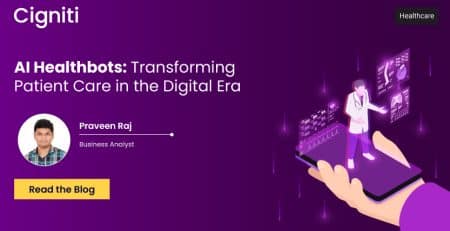Augment Human Testers First in the Path to AI-Based Autonomous Testing
Software development focuses on innovation, and existing software is modernized to cope, while continuous delivery means that both modernized and new software are deployed more regularly. How can testers handle more frequent testing while preserving or improving quality? They need to figure out how to help development teams provide high-quality work quickly.
Continuous integration and delivery are highly automated processes. If testers continue to do functional tests, integration tests, and end-to-end tests manually, they constitute a bottleneck and weak link in the software supply chain.
Yes, test automation must improve, but in order to do so, the tester’s practice intelligence must improve as well. If testers have been irritated by simple (but rigid) siloed application testing, they will become even more frustrated when applications and infrastructure designs grow more dispersed and multilayered, with hundreds of APIs and microservices. Past and existing testing methods are incapable of dealing with this expanding complexity; add speed to the equation, and the situation becomes considerably worse.
Augment Tester’s Intelligence so they can test more effectively
The successful use of information technology to supplement human capabilities is referred to as augmentation. The current growth of AI and ML augments testers’ intellect by allowing them to swiftly access a variety of data and make better-informed decisions, as well as assist them in optimizing test techniques, selecting increased automation, and more. Testers will be augmented by:
Provide robust APIs for business to test: Using testing technologies to augment business testers implies allowing them to accomplish more of what technical testers do (e.g., automate APIs, test in a more complex context, and test more precisely). Testing solutions that incorporate artificial intelligence (AI) mask the complexity for business testers by providing a simple user interface and templated natural language generation (NLG) interfaces that allow a business tester to communicate in a human-like language. As AI conversational systems advance, the business tester may become the most augmentable testing persona, allowing for more automation.
Allow technical testers to improve their optimization: Subject matter experts (SMEs), but not necessarily coders, are technical testers. Incorporating AI into testing procedures and technologies improves the efficiency of test efforts. It helps testers reduce the number of test cases in large regression test batteries by detecting duplicate or invalid test cases and optimizing the creation of new test cases by probing monitoring and production data. This provides data and insights to technical testers on which areas of higher business risk should be addressed or prioritized with testing. AI can also assist technical testers in automating more processes.
Allow developers to automate more and fix errors faster: While developers are testing more, the amount of time they spend testing is increasing dramatically. AI bots that help developers, can do some of the testing for them, saving time by autogenerating unit tests from the code they write. Developers benefit from data insights as well, as it allows them to quickly fix errors.
Discover when and how to use AI testing, whether it’s a myth or a reality
The way we think about and produce software is evolving, and teams are incorporating AI throughout the software development life cycle. So far, AI-based solutions have primarily targeted the testing and deployment phases. Many organizations have gone through the trial phase for AI testing use cases. While some of these use cases are becoming reality, others are still fiction. However, the trend is clear: all of these tools and methods progress testers and test automation, allowing for more autonomous testing.
The following use cases are sufficiently compelling to justify the use of augmentation tools and techniques:
Allow an API testing bot to handle the grunt work behind the scenes: API testing isn’t for the faint of heart, and it’s certainly not simple for developers. This use case allows testers to more readily spot common patterns across APIs and have a better understanding of API interactions, as well as everything else going on behind the scenes that can help them create positive and negative API tests faster.
Optimize the testing strategy and life cycle as a whole: Why waste time and effort testing everything when it may not be required, time-consuming, or impossible? Other intelligent activities require testers to think, which AI and machine learning can help optimize or automate.
Predict failures in the future: Software testers can use machine learning predictive models to identify possible issues and prevent them from occurring. Predictive analytics models are already being used by a number of companies to assist, predict, and avert production mishaps.
Identify and fix UI bugs on the web and on mobile devices: Automation testing based on user interfaces has existed for a long time, but it has never been precise or powerful enough. However, several new disruptive businesses are using AI and machine learning to scan web app and mobile UIs in order to find simple flaws and solve them.
Increase the accuracy of visual testing: To detect where images vary, deep learning (DL) uses pixel-by-pixel recognition. Using ML, DL, and reasoning, testers can determine whether differences are truly significant, making testing more intelligent. In some circumstances, ML and DL may detect significant differences on their own. This decreases the likelihood of tests failing due to minor issues such as various screen sizes or layouts, non-bugged pixel color changes, or unexpected “low battery” popups.
Optimize test data to reduce the time it takes for automation to run: If the testing data is incorrect, testing techniques cannot ensure quality. This use case assists testers in determining the best set of test data and any necessary changes, minimizing the amount of possible combinations and testing hours. There are non-ML-based combinatorial algorithms that can do this, but ML and DL are more precise. Synthetic data that mimics the real data model, data transactions, and changes in production is also created using an AI and ML-based technique, which aids testing.
With effective defect management, you can cut your mean time to repair: These tools or services assist dev teams in determining the commonalities and clustering of bug issues, gaining insight into the types of fixes that are required, or identifying a code area that need repair. Developers can also use this use case to crunch petabytes of data from previous projects.
Conclusion
Identifying the actual use cases, a lack of information about what truly needs to be done, confirming app behavior based on data input, testing apps for functionality, performance, scalability, security, and more are all problems that enterprises may face when utilizing AI to test apps for quality.
Cigniti’s extensive AI, machine learning, and analytics expertise assists businesses in improving their automation frameworks and quality assurance processes. Cigniti delivers AI/ML-driven testing and performance engineering services for your QA framework using its next-generation IP, BlueSwanTM.
Cigniti has established a 4-pronged AI-led testing approach, with a strong focus on AI algorithms for test suite optimization, defect analytics, customer sentiment analytics, scenario traceability, integrated requirements traceability matrix (RTM), rapid impact analysis, comprehensive documentation, and log analytics. To achieve 100 percent test coverage for your AI-based apps, leverage our expertise in defect predictive analytics and test execution.
Consult our team of AI Testing specialists to learn more about augmenting human testers first in the path to AI-based autonomous testing.





Leave a Reply